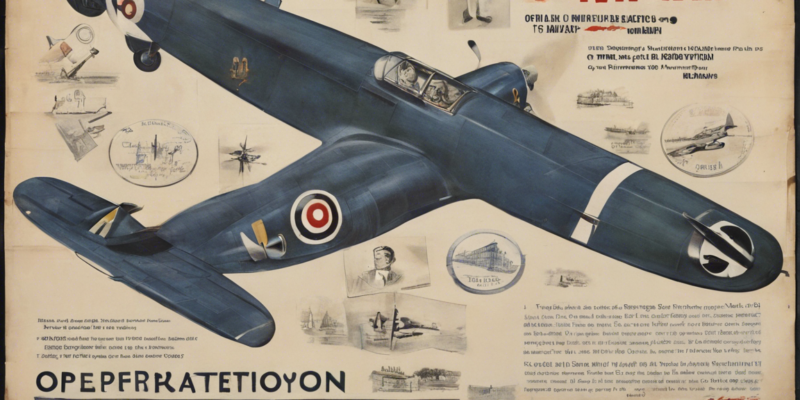In the realm of espionage and intelligence operations, Operation Mayfair stands out as a particularly intriguing and clandestine mission that has captured the imagination of many. The details of this operation have remained shrouded in mystery, with only fragments of information leaking out over the years. What was Operation Mayfair? What were its objectives? How did it unfold? In this article, we will delve deep into the secrets of Operation Mayfair, piecing together the available information to paint a comprehensive picture of this enigmatic mission.
The Origins of Operation Mayfair
Operation Mayfair was a highly secretive intelligence operation conducted by a coalition of intelligence agencies from multiple countries during the early 2000s. The exact timeline and specific participating agencies remain classified, adding to the aura of mystery that surrounds this operation. What sets Operation Mayfair apart from other covert missions is the level of collaboration and coordination between different intelligence entities, indicating the significance and complexity of the undertaking.
Objectives and Targets
The primary objectives of Operation Mayfair revolved around counterterrorism, counterintelligence, and national security. The operation was designed to gather crucial information on terrorist organizations, their networks, and potential threats to the participating countries. Additionally, Operation Mayfair aimed to disrupt terrorist activities, prevent future attacks, and dismantle extremist groups operating in various regions.
The targets of Operation Mayfair included high-level terrorist leaders, key operatives, and safe houses utilized by terrorist organizations. The intelligence gathered through the operation was intended to neutralize these threats, gather actionable intelligence, and enhance the overall security posture of the participating nations.
Execution and Methodology
The execution of Operation Mayfair involved a multi-faceted approach that combined human intelligence, signals intelligence, and surveillance operations. Intelligence operatives on the ground worked in close coordination with technical experts to intercept communications, track movements, and gather critical information on targeted individuals and groups.
The methodology of Operation Mayfair emphasized covert operations, undercover surveillance, and strategic infiltration of terrorist networks. This required a high degree of precision, skill, and secrecy to avoid detection and achieve the desired objectives without compromising the mission.
Successes and Challenges
While the specific outcomes and successes of Operation Mayfair remain classified, it is evident that the operation had a significant impact on disrupting terrorist activities and enhancing national security. The collaborative nature of the operation allowed for the pooling of resources, expertise, and intelligence assets from multiple countries, creating a potent force against terrorism.
However, Operation Mayfair also faced several challenges, including operational risks, intelligence leaks, and counterintelligence efforts by terrorist groups. The clandestine nature of the operation meant that any breach of security or compromise of operatives could have jeopardized the entire mission.
Legacy and Lessons Learned
The legacy of Operation Mayfair serves as a testament to the power of international collaboration in combating terrorism and safeguarding national interests. The operation highlighted the importance of sharing intelligence, coordinating operations, and leveraging resources across borders to address global threats effectively.
Lessons learned from Operation Mayfair continue to inform current counterterrorism strategies, intelligence operations, and security protocols. The success of the operation underscores the value of proactive measures, strategic planning, and relentless pursuit of those who pose a threat to peace and stability.
Frequently Asked Questions (FAQs)
Q1: What countries were involved in Operation Mayfair?
A1: The specific countries involved in Operation Mayfair have not been officially disclosed, given the sensitive nature of the operation. However, it is believed that multiple nations collaborated on this mission.
Q2: Was Operation Mayfair a single operation, or were there multiple phases?
A2: Operation Mayfair was a complex operation that likely involved multiple phases, each focusing on different objectives and targets within the overall framework of the mission.
Q3: Were there any known incidents or setbacks during Operation Mayfair?
A3: Details of any specific incidents or setbacks during Operation Mayfair have not been publicly revealed. However, like any intelligence operation, challenges and obstacles are to be expected.
Q4: Did Operation Mayfair have any long-lasting impact on the counterterrorism landscape?
A4: The impact of Operation Mayfair on the counterterrorism landscape is believed to be significant, although specific details remain classified. The operation likely contributed to disrupting terrorist activities and enhancing security measures.
Q5: How were operatives recruited for Operation Mayfair?
A5: Operatives involved in Operation Mayfair were likely recruited from elite intelligence agencies with specialized training in covert operations, surveillance, and counterterrorism.
Q6: Was Operation Mayfair a successful mission overall?
A6: While the specific details of its success are classified, Operation Mayfair is generally believed to have been a successful operation in terms of achieving its objectives and enhancing national security efforts.
In conclusion, Operation Mayfair remains a fascinating chapter in the history of intelligence operations, highlighting the complexities, challenges, and successes of combating terrorism on a global scale. The collaborative nature of the mission, the strategic methodology employed, and the lasting impact it has had on security practices serve as a testament to the dedication and expertise of those involved in this covert undertaking.









